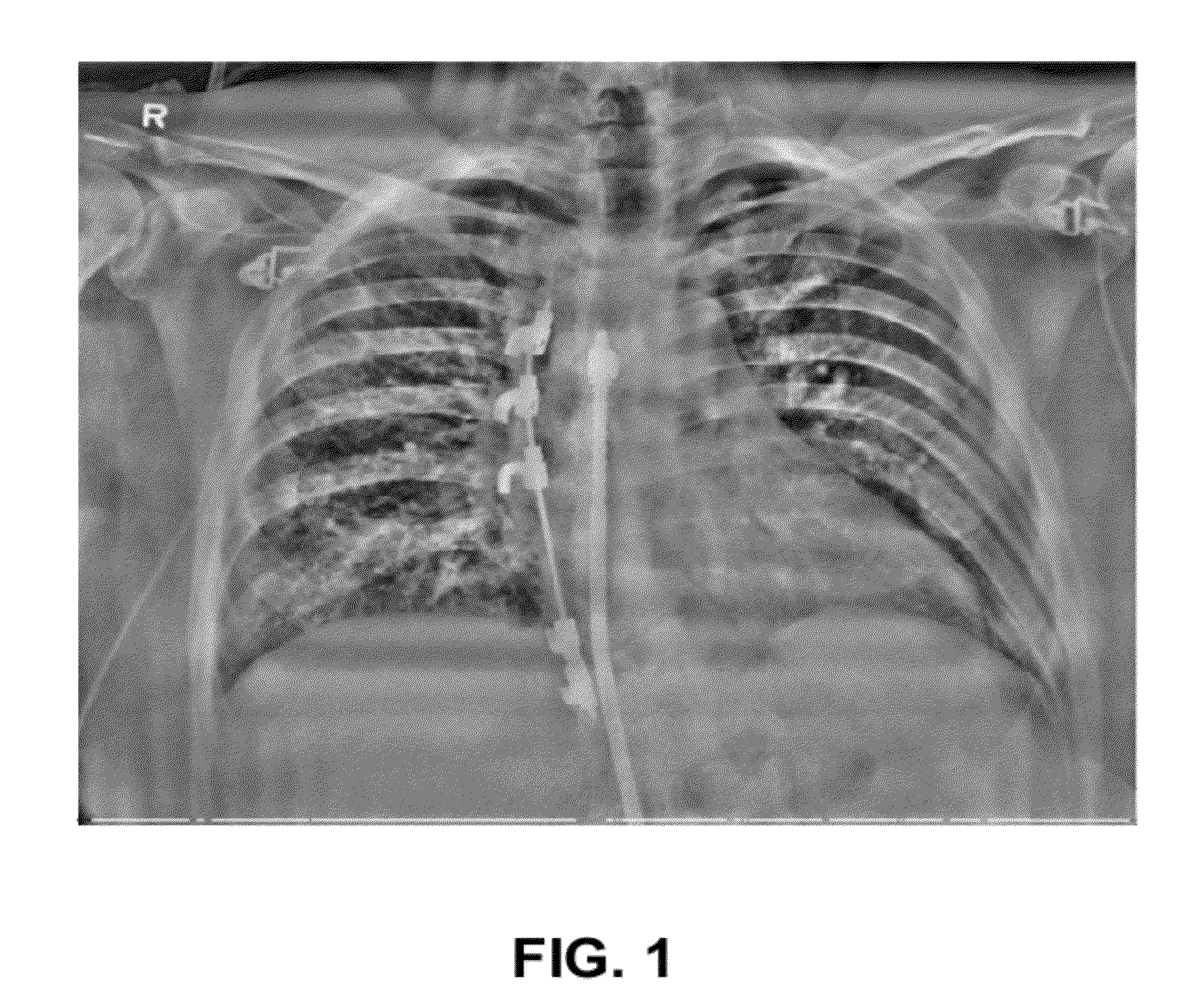Enhanced visualization for medical images
a technology of enhanced visualization and medical images, applied in image enhancement, image analysis, instruments, etc., can solve the problems of affecting the display of pneumothorax, difficult to detect pneumothorax in radiographic images, and complicating pneumothorax detection, so as to achieve pneumothorax enhancement in chest x-ray images
- Summary
- Abstract
- Description
- Claims
- Application Information
AI Technical Summary
Benefits of technology
Problems solved by technology
Method used
Image
Examples
Embodiment Construction
[0035]The following is a detailed description of the preferred embodiments of the invention, reference being made to the drawings in which the same reference numerals identify the same elements of structure in each of the several figures.
[0036]The method of the present invention executes on a computer or other type of control logic processor, which may include a dedicated microprocessor or similar device. A computer program product used in an embodiment of the present invention may include one or more storage media, for example; magnetic storage media such as magnetic disk or magnetic tape; optical storage media such as optical disk, optical tape, or machine readable bar code; solid-state electronic storage devices such as random access memory (RAM), or read-only memory (ROM); or any other physical device or media employed to store a computer program having instructions for controlling one or more computers to practice the method according to the present invention.
[0037]It is noted ...
PUM
 Login to View More
Login to View More Abstract
Description
Claims
Application Information
 Login to View More
Login to View More - R&D
- Intellectual Property
- Life Sciences
- Materials
- Tech Scout
- Unparalleled Data Quality
- Higher Quality Content
- 60% Fewer Hallucinations
Browse by: Latest US Patents, China's latest patents, Technical Efficacy Thesaurus, Application Domain, Technology Topic, Popular Technical Reports.
© 2025 PatSnap. All rights reserved.Legal|Privacy policy|Modern Slavery Act Transparency Statement|Sitemap|About US| Contact US: help@patsnap.com



